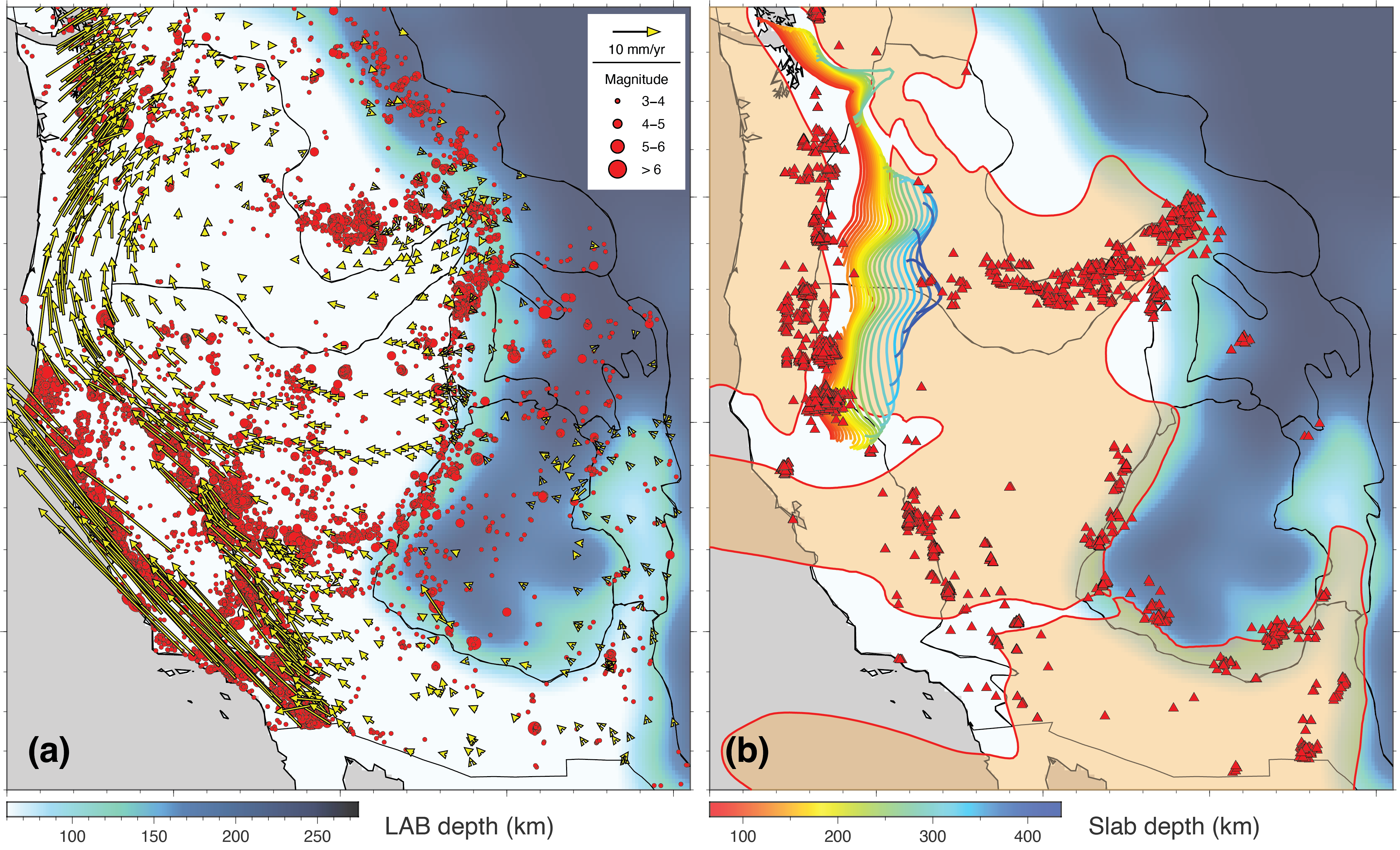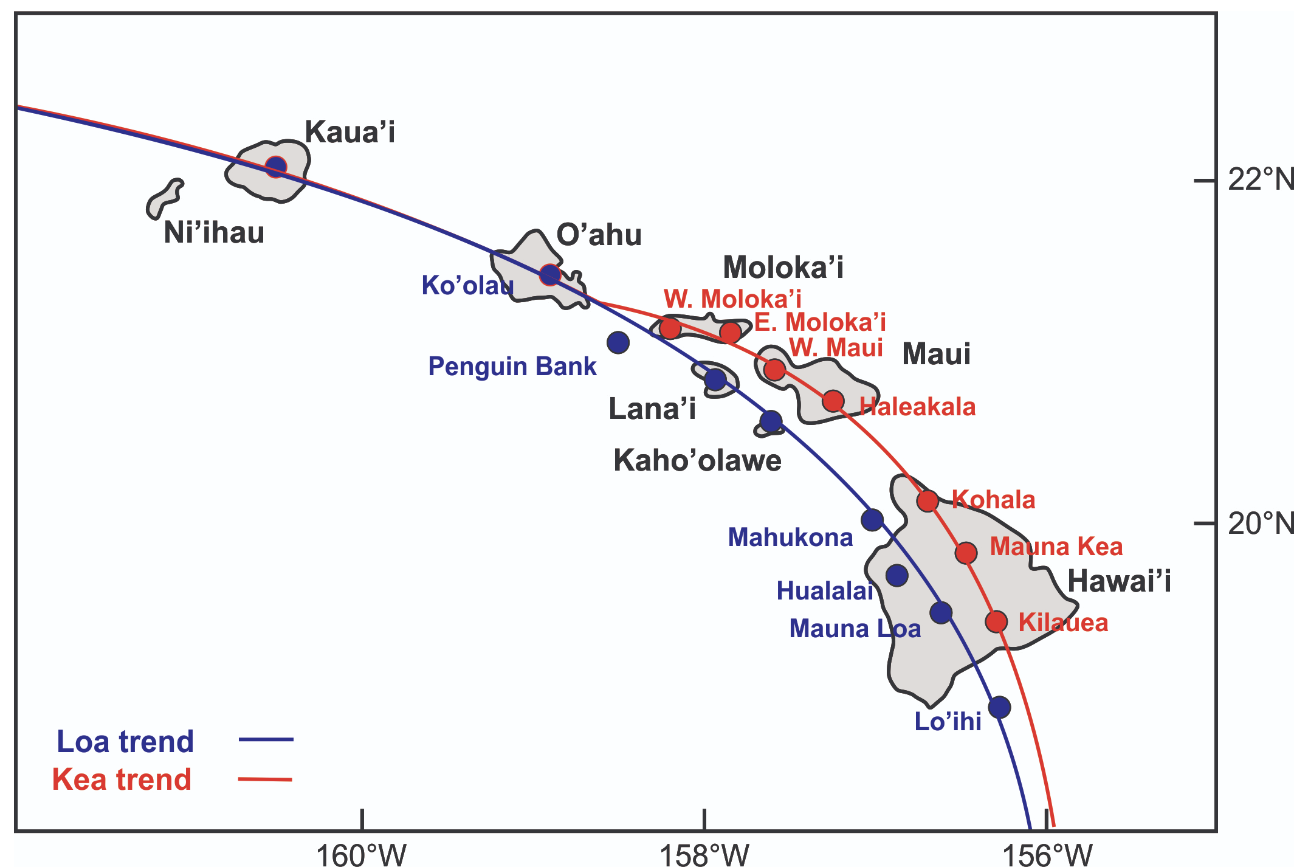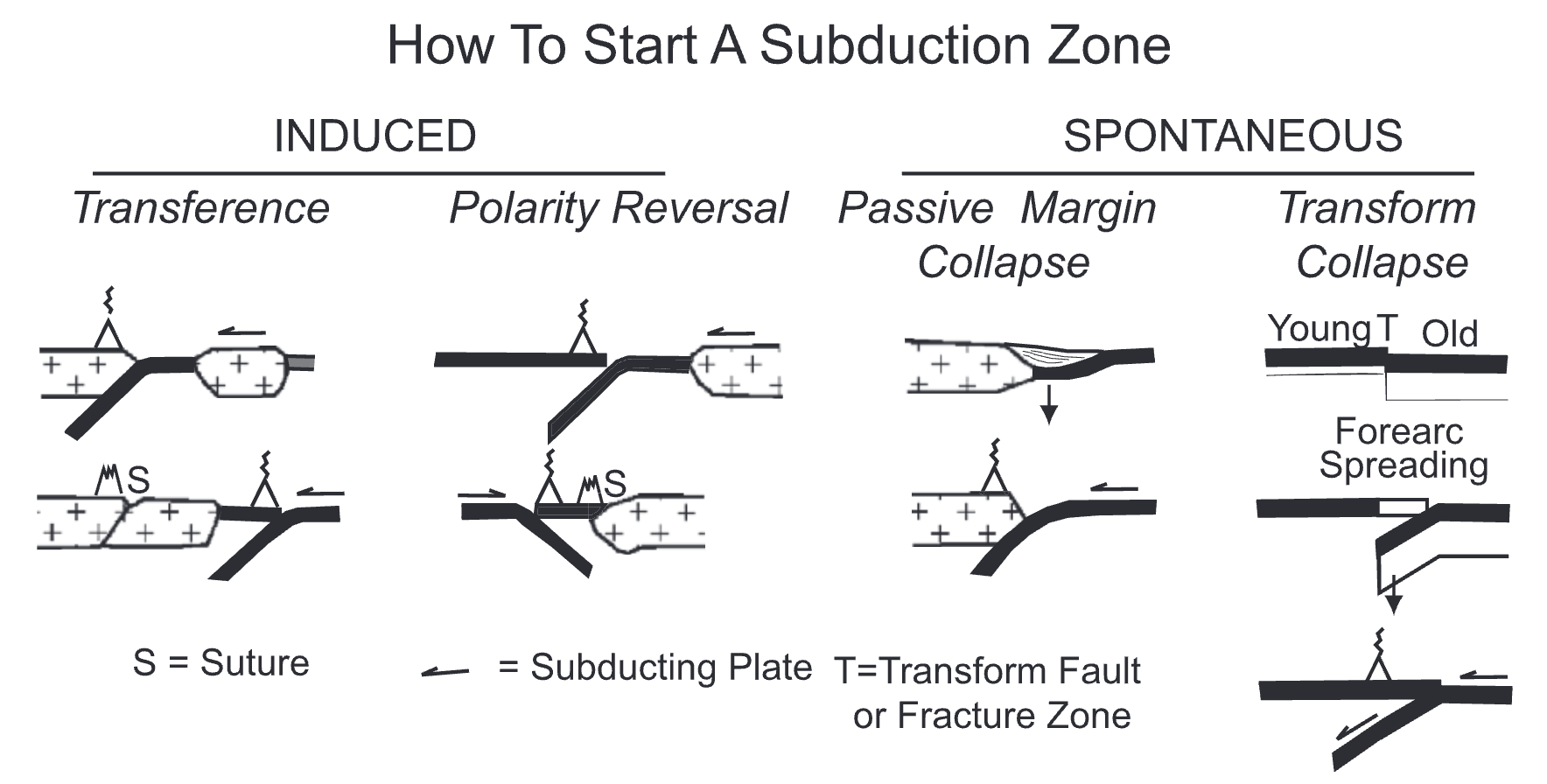Research
Lithospheric dynamics
The origins of intraplate deformation and volcanism have been debated for decades. For example, the tectonically active western U.S. (WUS) has widespread crustal motion, clustered seismicity, and clustered volcanism. To further understand the lithospheric and mantle dynamics in the WUS, particularly the lithosphere-asthenosphere interactions caused by the complex mantle and lithosphere structures, we develop a fully coupled lithosphere-mantle model. This model well explains the observed crustal deformation, asthenospheric azimuthal anisotropy, crustal stress state, and strain localization in the WUS. In addition, the model provides new insights into the origin of intraplate volcanism in this region (Cao and Liu, in prep).

Crustal deformation, intraplate volcanoes, slab surface, lithosphere-asthenosphere boundary (LAB), and hot asthenospheric materials in the WUS. (a) GPS measured crustal motion (UNAVCO) and earthquakes during the past 40 years (USGS, with magnitudes larger than 3) overlying the LAB in the WUS. (b) Slab surface, intraplate volcanoes, and hot asthenospheric materials overlying the LAB in the WUS. Colored contours represent the depth of slab surface. Red triangles indicate the locations of volcanoes during the past 2 million years (NAVDAT). The orange isosurfaces with red outlines indicate hot asthenospheric material (> + 30˚C than the ambient mantle) at 150 km.
Plume dynamics
Recent volcanoes in Hawaii could be divided into two distinct chains based on lead isotopes (Abouchami et al., 2005, Nature). The origin of this double volcanic chains is debated. We develop a high-resolution geodynamic model to explore the potential plume-plume interaction beneath Hawaii. This model could explain the origin of two distinct volcanic chains, fluctuations in magma flux, and the recent southward bend observed in the volcanic chains (Zhang et al., submitted).

The double volcanic chains in Hawaii. (Modified from Jones et al., 2017, Nature)
Subduction initiation
Subduction initiation (SI) along passive margins is a critical stage in the supercontinent cycle, during which the total length of convergent margins increased sharply during supercontinent breakup. However, the mechanism of SI at passive margins remains debated for decades. Recent studies suggest that the continental lithospheric mantle (CLM) may consist of a buoyant upper layer and a dense lower layer, a density configuration that could trigger delamination of the dense lower CLM during separation of a supercontinent. We are developing high-resolution 2D geodynamic models with viscoelastoplastic rheology to investigate SI triggered by delamination and the associated geological processes.

General classes and subclasses of how subduction zones form. (Stern, 2004, EPSL)
Global adjoint convection model
The dynamics of slow seismic anomalies in the upper mantle is a key component to understanding the mantle convection system. However, due to its ill-constrained dynamic properties and unknown initial location, the temporal evolution of slow seismic anomalies is hard to reproduce in forward modeling approaches. The adjoint method provides a chance to model the evolution in an iterative way. We are developing a global adjoint convection model to investigate the dynamic properties and temporal evolution of slow seismic anomalies in the upper mantle.

Shear-wave velocity purterbations at 200 km from (a) TX2019, (b) S40RTS, and (c) SEMUCB-WM1. All seismic tomography models show broad slow seismic anomalies, whose dynamics is uncertain.
